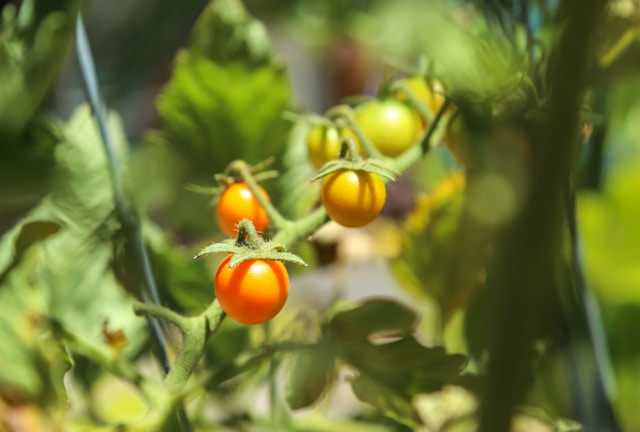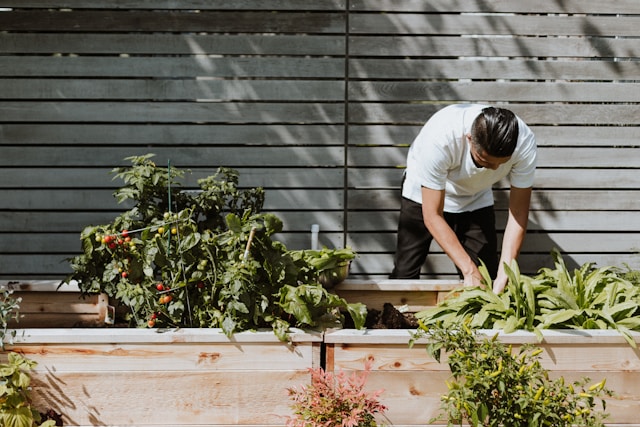Physical Address
304 North Cardinal St.
Dorchester Center, MA 02124
Physical Address
304 North Cardinal St.
Dorchester Center, MA 02124

Welcome to our guide on how to grow tomatoes in plastic bottles! At Sow Haven, we’re passionate about eco-friendly gardening methods that reduce waste while providing fresh, delicious produce. In this guide, we’ll show you how to repurpose everyday items like plastic bottles and twine to create space-saving planters for your tomato plants. Let’s get started!
To begin, clean your plastic bottles thoroughly. Remove any labels and wash them with soapy water to get rid of residue. Let the bottles dry completely before moving forward.
Using a sharp pair of scissors or a craft knife, carefully cut the bottles to create planting containers. For deeper containers, make your cut closer to the top of the bottle. Smaller bottles can be cut nearer the bottom for a shallower depth.
Ensure proper drainage by poking or drilling holes at the bottom of each bottle. Adequate drainage prevents waterlogging, which can harm your tomato plants.
Tomatoes are highly sensitive to frost, so wait until after the last frost date in your area to transplant them outdoors. Check with local gardening resources or agricultural extension offices for precise frost dates.

Tomatoes thrive in warm soil. For successful transplanting, aim for a soil temperature between 60°F and 70°F (15°C to 21°C). Using a soil thermometer can help you ensure optimal conditions.
Tomatoes prefer slightly acidic to neutral soil with a pH between 6.0 and 7.0. Use high-quality potting soil enriched with organic matter like compost, peat moss, or well-rotted manure. These amendments improve moisture retention, aeration, and nutrient availability, creating the perfect environment for healthy tomato plants.
Caring for Your Tomato Plants
Place your plastic bottle planters in a sunny location where the plants can receive at least 6 to 8 hours of sunlight daily. Keep the soil consistently moist but avoid overwatering, as soggy soil can lead to root issues.
If you’re growing from seeds, thin the seedlings to leave only the strongest ones. This ensures each plant has enough space to grow and flourish.
As your tomato plants grow, they’ll need support to prevent the stems from bending or breaking under the weight of the fruit. Use tomato cages, stakes, or other support structures to keep the plants upright. Proper support also helps the plants get adequate sunlight, which is essential for fruit development.
Tomato plants often develop small offshoots, known as suckers, in the junction between the main stem and branches. Removing these suckers redirects the plant’s energy toward fruit production rather than excess foliage growth.
Pruning suckers also improves airflow around the plant, reducing the risk of diseases like blight and fungal infections that thrive in crowded, damp conditions.
Applying slow-release nutrients like bone meal and composted manure to keep your tomato plants healthy and productive. These natural fertilizers provide a steady supply of essential nutrients, supporting robust growth and fruit development.
Be cautious with nitrogen-rich fertilizers, as too much can lead to lush foliage but fewer fruits. Phosphorus, found in bone meal, is especially important for root development and fruiting. Always follow recommended application rates to avoid over-fertilizing.
As tomatoes ripen, their color changes depending on the variety—red tomatoes turn red, yellow varieties become yellow, and so on. Some heirloom types remain green even when fully ripe, so familiarize yourself with the specific variety you’re growing.
Ripe tomatoes should feel firm but yield slightly to gentle pressure. Avoid picking them too early when they’re hard, or too late when they’re overly soft. Regular harvesting encourages continued fruit production, so enjoy your tomatoes often!
Growing tomatoes in recycled plastic bottles is a simple and sustainable way to enjoy fresh produce while reducing waste. At Sow Haven, we love sharing innovative gardening techniques that help you make the most of your space and resources. Start your plastic bottle garden today and reap the benefits of this eco-friendly gardening method!